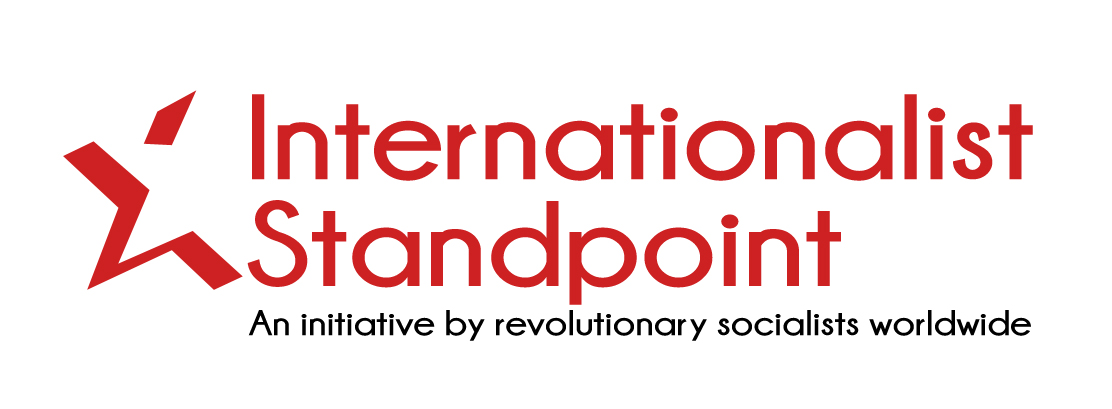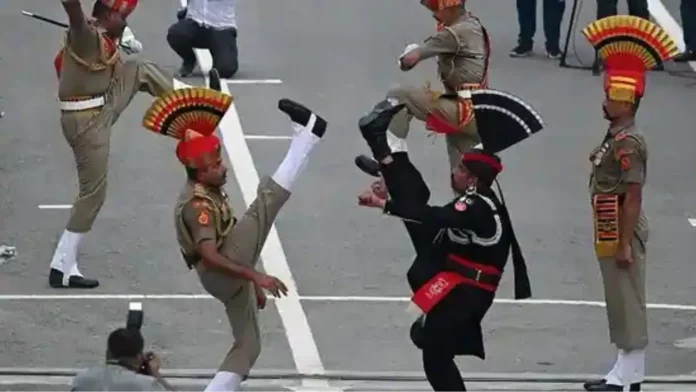By John Simpson, Ireland
To the mainstream media Kashmir is just another trouble spot from around the world. A group of Indian tourists are murdered in this picturesque region amongst the foothills of the Himalayas. India blames Pakistan and initiates yet another of their tit for tat exchanges of heavy weaponry. Then it is announced that the US government has stepped in to broker a ceasefire.
The media offers little explanation, analysis or history. To someone from Northern Ireland who has lived experience of the nefarious exploits of the British Empire this is particularly galling. However, in Ireland North and South we have had the advantage for several hundred years of being able to study imperialism at close quarters.
What’s behind recent events?
So, what was behind the recent turbulent events in Kashmir? Or indeed Palestine or many other places around the world? The answer: the toxic legacy of the British Empire.This is not something that is taught in schools but something the working class, and young people everywhere, need to familiarise themselves with. This is because imperialism still dominates many of our lives whether it emanates today from the USA, or possibly China in the near future. (A footnote to the exchanges between the armed forces of India and Pakistan is that the military hardware supplied by China to Pakistan has apparently proved far superior to the Western made jets and air defence systems employed by India.) Thus far the imperialism of the Chinese regime has manifest as ‘soft power’, investment and construction of large-scale infrastructure projects, but like all imperialist ventures there will have to be payback at some point.
Which brings us back to the British Empire’s activities in South Asia. Their cover story is that they brought modernisation with their conquests of what is now India, Pakistan and Bangladesh (and also Myanmar). The fact that it started with an entity known as the East India Company, which had its own private army of mercenaries, gives the game away. It was so successful in plundering the wealth of those vast areas that it was essentially nationalised by the British government thus affording it a veneer of respectability, as well as hugely enriching the British exchequer.
The murderous British Raj (Rule) specialised in super exploitation of the local workforce and in extracting raw materials in previously unheard-of quantities. Theft by any other word. With their tried and tested (in Ireland) tactics of Divide and Rule, and with the collaboration of sections of the local ruling classes, the British Empire extracted and extorted what would now be billions of dollars year on year. The complex political, social, ethnic and religious balance that existed before British intervention was ripe for exploitation, and the nascent British Empire played its hand as expertly as any criminal gang in the history of the humankind. Rather than modernisation, the economic development of the region was crippled and thus shackled to the needs of the Empire. So, the legacy of imperialism in South Asia is one of impoverishment for the masses who are still being played one off against the other by the ruling classes both in India and Pakistan. Despite advancing their economies since then, they have failed miserably to lift the vast majority of their populations out of poverty.
The collapse of the British Empire
The current crisis in Kashmir dates back to the collapse of the overextended British Empire, in the aftermath of World War Two. As its grip on south Asia weakened it executed an abrupt and very messy military withdrawal from the region in 1947. The increasingly widespread violent clashes leading up to this between Hindu and Muslim extremists panicked the impoverished masses. The British, in the personage of Lord Mountbatten, essentially sided with the extremists of both ethnic groups by sanctioning the creation of Muslim (Pakistan) and Hindu (India) homelands with arbitrarily drawn borders. The crisis was exacerbated by Mountbatten’s hastily arrived at decision to give the affected peoples on the new borders mere days to react. Chaos ensued.
Between ten and twenty million people either fled from Pakistan to India or vice versa-Muslims to Pakistan, Hindus to India. Over a million people lost their lives in the ensuing violence and upheaval, though this number is likely an underestimate as no reliable records were kept in a situation in which infrastructure had completely collapsed. The most severely affected areas were the Punjab in the west and Bengal in the east. Kashmir, to the north of the Punjab, escaped the worst of the initial disaster as the British Raj treated it as a semi-independent region administered by a local ‘Prince’ and so afforded the local Maharajah the authority to decide which side to go with. No arbitrary border was therefore drawn through Kashmir as had happened elsewhere. However, the mainly Muslim region was subsequently swallowed up by ‘Hindu’ India. It wasn’t long before military clashes began between Pakistan and Indian armed forces. Local insurgents also played a role in opposing Indian rule, some of whom argued for an independent Kashmir. A ‘Line of Control’ splitting Kashmir in half was established in the 1972 with an armed camp on either side. Peace has never broken out there, Muslims in Indian ruled Kashmir live under what is essentially martial law.
Inflamed tensions
The current leader of India, a sectarian thug by the name of Modi, inflamed opposition to Indian rule by removing the last vestige of a local administration in 2019 in the Indian dominated half of Kashmir. Modi, more than many of his predecessors, has deliberately inflamed religious tensions in India by his pro-Hindu and anti-Muslim rhetoric and actions. Muslims in India have long endured discriminatory acts by various Indian national and regional governments, none more so than the unfortunate Kashmiri Muslims. But behind this is the very real problem for the Indian ruling class of keeping on top of the other separatist groups active across India which number into double figures.
The Divide and Rule tactic introduced by the British Raj still has its uses for the ruling class. It also provides an important distraction from the ever-widening gap between India’s super rich and the working classes in city and countryside. And of course, if that isn’t enough then it is very convenient to be on a constant war footing with an enemy across the border in Pakistan. A useful tactic to rustle up every so often in order to distract the masses from their need to focus on the economic class war that is waged against them on a daily basis by their own Indian overlords. This applies equally of course to the downtrodden masses in Pakistan.
In summary
In summary then, the events in Kashmir are perhaps most easily understood by those across the world who have lived experience of imperialism and its vast and overwhelming propaganda machinery. Our response should be to show a lead in opposing war and opposing ethnic violence as a means of solving problems either domestically or internationally. The solution, as ever, is to forge unity between workers across both ethnic and national boundaries and to reject those leaders and political parties who foment division amongst workers in South Asia and elsewhere in the post-colonial regions of the world.
Unfortunately, it is clear that across the globe there is an absence of workers and socialist formations with the ability to resist the relentless attacks on workers worldwide in the recent period. What is required is the building of new workers parties which can link across borders in an anti-imperialist and anti-capitalist united front that will cut across national, ethnic, religious and all other barriers to working class unity.



